Ten years and an uncountable number of changes big and small for yours truly. Likewise metal saw numerous creative changes in both the practical (learning to coexist and thrive through the internet) and the creative (genre synthesis everywhere!), likely all in overlapping ways.
A list like this is terrible because there is no way to really distill ten years of listening into any number of albums. A list like this is fantastic because it allows you a few moments to think back over the hundreds upon hundreds of albums you encountered over those years and ponder what stuck out immediately, what took awhile to grow, and what faded over time.
As anyone who has read over my year-end lists for Dead Rhetoric (or going further back, for Blistering) will note I tend to feature a number of non-metal releases as a great deal of my listening tends to involve things outside the metal realm. For purposes of this list, however, I’ve limited the inclusion of non-metal releases to a few sparing choices (as such you won’t see my perennial beloveds Chromatics or The Black Queen). Even in pairing down the possible entries, the number of omissions are staggering considering regular pillars of my listening (Alcest, Mgla, Below, MisÞyrming, Wolves In The Throne Room!). There will always be more quality material than spaces available to showcase said material.
With that said, these are not arranged in any particular order and as I type this up I’m listening to one of the more fascinating outcroppings of this decade with cultural parallels to black metal: dungeon synth. It’s a wide, exciting world and this list is only a microscopically small view of it.
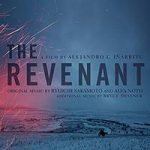
The Revenant Soundtrack – Ryuichi Sakamoto, Alva Noto, Bryce Dessner (Milan Records)
Though effort has been made to limit the instances of non-metal releases on my list, this list would not be possible without this work at the very top. Whether taken in terms of personal impact or sheer amount of listening since its late-2015 release, nothing else for the decade even comes close. As vast and sweeping in scope as the film it accompanies, this is a musical experience that can be enjoyed immensely, whether or not you have ever watched the film. There is very little in this world I would consider transcendent but the experience this album offers is one of them. Stunning through and through.
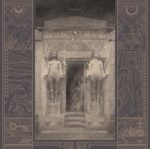
Ash Borer – The Irrepassable Gate (Profound Lore)
The album that preceded this one, Cold Of Ages, buried itself deep in my listening. So much so when this album released in late 2016 I really could not get into at first. Part of that may have been due to the shift in sound (synths were out!), and part of it may have simply been a paranoia that Cold Of Ages would be eclipsed. A misguided but occasional assessment as indeed as 2017 ticked by The Irrepassable Gate worked its way in and has consistently since refused to leave my routine listening. A tower of ancient anxiety looming across uncrossable distances, there is an otherness inherent in Ash Borer’s sound few others can match.

The Devil’s Blood – The Thousandfold Epicentre (Metal Blade)
I distinctly recall edging slowly into the realm of what appeared then a nascent ‘occult rock’ world while driving home from class in late 2011, three groups with very different approaches: Orchid (stopped following them ages ago, and of course not to be confused with the legendary screamo group), Ghost (how far they’ve come!), and The Devil’s Blood and its newly released opus The Thousandfold Epicentre. The band stood apart then as much as they do now for the weight, the craft, the intense artistry they brought to the table. There was no schtick or B-film horror – it was ritual cast in shimmering fire. Much like its driving force SL, the band ended far too soon. There is a timelessness to The Thousandfold Epicentre, however, that none of its contemporaries can similarly lay claim to.

The Fall of Every Season – Amends (Grau)
Some of my favorite albums in any era are those I stumbled upon without intending to and nowhere is that represented more readily than with Amends. A one-man band playing not black metal but instead a longform death/doom that ebbs and flows across a handful of long, dense, multi-part songs. It is a strange proposition to describe something as being both progressive and melancholy but that is exactly what Amends brings to the patient listener. Nearly seven years later it continues to be a best friend in listening.
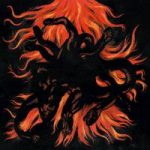
Deathspell Omega – Paracletus (Norma Evangelium Diaboli)
If there is a single album that can lay claim to being a genesis for my own listening patterns across the decade AND instigating whole scenes to spring up in its wake, its Paracletus. For the conclusion of the trilogy that began in 2004, Paracletus is as sonically dense as a dying star yet so tightly wound that its 42 minutes float by with nary a wayward breath. To this day – fucking spectacular.

Nebelung – Palingenesis (Temple of Torturous)
Unquestionably the most meditative release on this list, though it shares in the dense winter melancholy of The Revenant. Palingenesis is almost entirely instrumental, a considerable shift for the folk group at the time (and unfortunately, as of 2019, without a successor in sight). Featured in the past on compilations with Drudkh and Winterfylleth, that was how I came to be introduced to the group (“Graue Nacht” is still a heart wrencher). Palingenesis is something else entirely. A tower of silence in a dense landscape, it is haunting in ways few albums could hope to match, regardless of genre trappings.
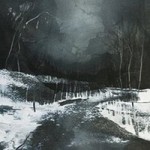
Agalloch – Marrow Of The Spirit (Profound Lore)
For most of their duration, spectacular as they were, Agalloch were often riding one trend or another as they swelled about the currents. After acquiring a legitimate drummer in Aesop Dekkar sometime after Ashes Against The Grain they decided a push into darker, more blasty woods were necessary. In response to the cleanliness of that album and the likely noise Wolves In The Throne Room and company were making, the band gave us this album. I, no doubt like many others, was utterly blown away when “Into The Painted Gray” came roaring out on first listen. It’s Agalloch but darker than they’d ever dared go before – and it still works extremely well. May the band and John Haughm’s word vomit rest in peace.

Deafheaven – Ordinary Corrupt Human Love (Anti-)
There was an enormous internal struggle over whether it would be this album or Sunbather, the album most likely to top the majority of these decade-style lists (and with good reason). I documented at length last summer my own experience with that album and in near-2020 I still regularly indulge it. Ordinary Corrupt Human Love, however, is Deafheaven experiencing and showcasing growth like no other time before. That it managed to accompany my release from active duty was only icing on a rich cake of internal associations. It’s a hell of a release and I love it dearly.

Ulver & Sunn O))) – Terrestrials (Southern Lord)
While there are several groups that could have qualified for multiple entries on this list, Ulver is the only one that would be here multiple times solo AND as part of this stellar collaborative release. Though SUNN O))) are no strangers when it comes to collabs, Ulver rules the roost here, even when Garm’s voice isn’t on display. There isn’t a whole lot to say here, it’s a painfully brief, fantastically rich listen. A stellar crown atop a staggering decade for Ulver.
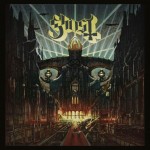
Ghost – Meliora (Loma Vista)
Much like Deafheaven, there was considerable struggle in offering this album or 2012’s Infestissumam. While that album remains a stupidly fun listen, Meliora came to me while deployed – I was in Bahrain for a few days and managed to snag it via some very welcome MWR-provided WIFI. Thanks to spending most of 2015 on a ship underway I’d encountered none of the singles and knew nothing about what to expect when I pressed play. Goddamn was I thrilled and Meliora presented zero disappointment. It remains a beacon from that year and gives an air of enjoyment to what was otherwise a fairly surreal life experience.

Behemoth – The Satanist (Metal Blade)
It’s difficult to convey the excitement I had for this album when “Blow Your Trumpets Gabriel” released in late 2013 (the closing part of the song still gives me goosebumps). No matter how astronomical my expectations were when The Satanist released in early 2014, it met and surpassed them. Ferocity, focus, and just enough of a turn to the strange and avant-garde – the sound of a band that, quite literally, had faced oblivion and emerged stronger for it. Any routines that may have settled within the Behemoth sound during the late aughts’ string of albums was subsequently vaporized and replaced with a new, unmatched energy. That energy remains.
Worm Ouroboros – What Graceless Dawn (Profound Lore)
Much like The Irrepassable Gate, this album released very late in 2016 and took even longer to sink in as an experience. Somewhere in mid-2017, however, I was firmly entranced and have yet to emerge. Intensity as a simmer, What Graceless Dawn is not a traditional metal experience but remains staggering in its impact. Stunning, melancholic, utterly without peer in the way it presents the experience that it does.

Fauna – Avifauna (Pesanta Urfolk)
This monstrosity in five parts embodies everything that is fantastic and excessive about the ‘Cascadian’ black metal sound. It truly landed home as an experience as I listened to it driving between Astoria and Portland, Oregon earlier this year, the vast landscape given a human approximation in a way that made sense. It’s a journey like little else can offer.
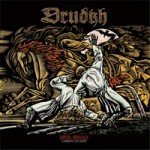
Drudkh – A Furrow Cut Short (Season of Mist)
I happened to secure this album digitally right before I deployed so it was among a handful of albums I got to become very familiar with over the course of 2015. My expectation then as much as now is that a lot of what was happening in Ukraine with the annexation of Crimea played heavily into some parts of this album. It cut aside much of the post– experimentation of the previous two releases and instead and a dense, focused experience (even being considerably longer than any of the band’s other albums). There is an intrinsic despair to much of A Furrow Cut Short, something inescapable.
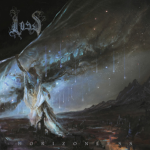
Loss – Horizonless (Profound Lore)
What struck me most in the lead up to Horizonless’ release was exactly what remains most outwardly striking now: the cover art. Being completely unfamiliar with the band but knowing they trafficked in funeral doom, it admittedly took me longer than I care to admit to actually indulge the album as a listening experience. When I did I knew immediately that I had been a fool to wait. The cover art is indicative what I found within – a misery strongly conveyed, so much so that even reality could be peeled back in its wake.

The Great Old Ones – Tekeli-li (Les Acteurs de l’Ombre Productions)
For the French sextet the 2010s has been a killer decade – four albums and all of them knockouts. My own foremost joy (for now) occurred here with Tekeli-li, a concept album based entirely around Behind The Mountains of Madness. More cohesive as an experience than EOD and far more polished than Al Azif, this was where all of the band’s potential became manifest in reality. Closer “Behind The Mountains” remains a harrowing listening experience – one the band has yet to match.

Schammasch – Triangle (Prosthetic)
For all of 2015 that I spent at sea I spent all of 2016 moored to the pier in San Diego and engaged in the miserable throws of what in naval terminology is known as the yards. It did mean though that I had regular access to reliable internet and could keep greater cognizance of what was going on in the world (metal or otherwise). I think it was later in the year that I came upon Triangle and it was admittedly love at first listen. Issues inherent with the physical release are not present in the digital form and as a complete, 100-minute listening experience, it was unmatched. It introduced me to a band that, by all accounts in 2019, is only getting better.
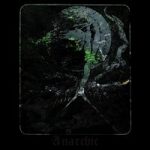
Skagos – Anarchic (The Flenser)
With a large portion of the second wave being indebted to the works of Tolkien, it should come as no surprise that other pillar works have given rise to similarly stellar groups – enter the duo Skagos. Much like Avifauna, Anarchic is a sprawling, largely continuous listening experience that is not intended to be broken up or easily digestible. My fondest memory is listening to this while walking several miles around the paths of Cape Disappointment, Washington and there is little that could have served as a more fitting backdrop to the enormity of the location. It’s a shame that most of the groups so active in this scene for the early part of the decade have given over to dormancy since.
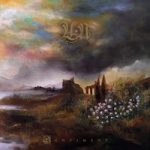
Un – Sentiment (Translation Loss Records)
Moment of truth: I had zero idea what this album sounded like when I ordered it purely on the strength of its album cover (a stunner). The beauty within meets and exceeds the beauty without as Sentiment is exhausting in more ways than one. A graceful exploration of what is possible within the doom sound, there are some extremely beautiful moments here when the listener isn’t being suffocating. Sometimes rolling the dice pays off more than you could ever expect and Sentiment is a testament to that. This is an album I’d take to an island and regret nothing.

Deftones – Diamond Eyes (Reprise Records)
Whew, another struggle between two stellar releases for a single band (the other, of course, being 2012’s Koi No Yokan). Had you asked me in 2013 or 2016, Koi No Yokan would have taken the crown but over time this album, the album that reintroduced the band to the world after their long silence, wins out. Diamond Eyes is a more immediate listen but digs in, far more than I ever expected. “You’ve Seen The Butcher” is easy to get lost in and “976-EVIL” remains a song entrenched in driving across California and away from things left behind. Whatever the personal associations, Diamond Eyes is a demonstration that artistry triumphs.
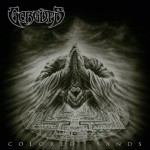
Gorguts – Colored Sands (Season of Mist)
I was woefully unfamiliar with Gorgots when Colored Sands released in late summer 2013. I was also freshly out of bootcamp and it was everything I needed to get reacquainted with the world at the time. Like many other albums on this list it’s a dense, sprawling undertaking that is exacting in its approach and exacting in its execution. It’s no easy listen but is all the more rewarding for it. When I got to see the band live in 2016 several songs from this album dotted the setlist (along with the entirety of Pleiades’ Dust!). Monstrous. Absolutely monstrous.

Sinmara – Hvìsl Stjarnanna (Van Records)
Of the albums from the closeout year of the decade none were more deserving for inclusion on this list than Sinmara (and, to be fair, several had representation earlier in the decade). Something I expressed both in my year-end wrap up and my album review in the spring is that this album takes time to sink in. For me it continues to sink in and get better with each new listen. For one of the pillars of the Icelandic scene this bodes well – this is a tremendous piece of work.
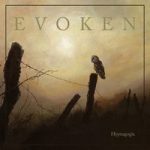
Evoken – Hypnagogia (Profound Lore)
Whew, where to start with Evoken? It required some deliberation, choosing between this release and 2012’s Atra Mors, each album with similar merits to placement. What ultimately won out was, apart from the concept album approach the band took here, the devastating use of keys/synth in the songs. Maybe this owes to my own growing appreciation for synth across the decade but the haunting use of synth can really accentuate or set off a darkened mood. “Too Feign Ebullience” remains a standout of this aspect put to practice and I find it endlessly haunting. Say goodbye to the light and joy alike – neither are to be found here.

Chelsea Wolfe – Pain Is Beauty (Sargent House)
My album of the year in 2013 and a regular feature thereafter, Pain Is Beauty remains a step beyond the more metal infused albums that would follow it. My introduction to her came via a guest vocal spot she did with Russian Circles in 2013 and the relationship was irrevocable thereafter. This year’s Birth Of Violence was a slow grower, perhaps in no small part for how much it shares in common with Pain Is Beauty. Unceasingly dark while remaining experimental, there is no stylistic consistency to this album, something admittedly very different from most of my album affinities. What remains is what has always been – something cathartic and exhausting. An experience.

Altar of Plagues – Teethed Glory and Injury (Profound Lore)
What an album. From the moment I first watched the divisive video for “GOD ALONE” to the point I stumbled across a used copy of the vinyl in a small California record store, my experiences with Teethed Glory and Injury have been nothing if not visceral. Given the work that went into the album and that the band called it quits no long after its release, that isn’t surprising. Whether intentional or not the effective marriage of blackened extremity with electronic undercurrents the band put to use here has reaped considerable rewards with bands that have come later (and I mentioned a couple of them earlier in the year!). Far removed from the legendary White Tomb, this album resembles nothing else on this list nor much else besides. The contortions of transcendence are here embodied.
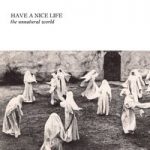
Have A Nice Life – The Unnatural World (The Flenser)
Even if there is little technically ‘metal’ about this release the heaviness it carries in the form of its emotional impact outclasses almost anything else. For the post-punk/experimental duo Have A Nice Life this album was standard bearer for my own needs in 2014. Mixing visceral emotional weight catchy songwriting made for an experience few can imitate or match. Whether when I was trapped on the central California coast contemporaneously with this album’s release or in the many travels that followed (unsurprisingly, this makes for a spectacular desert companion), this album has lost none of its essence over the years since its release.
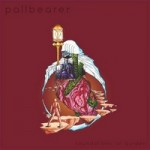
Pallbearer – Foundations of Burden (Profound Lore)
It was admittedly a toss up between this album and 2017’s Heartless – I have a wealth of fantastic associations with both. As the latter are more associations built through others and those with Foundations Of Burden are purely my own, however, it wins out for purposes of this list. The band expanded its sound and my experiences with it – likely no mistake that many of the albums from this list are concentrated in 2014 – it was a transformative year. Here though was an unexpected way to experience melancholia – it did not require a glacial pace or indulgences in the harsh. It was – remains really – an experience in possibility.
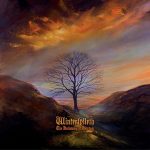
Winterfylleth – The Hallowing of Heirdom (Candlelight/Spinefarm)
This was a very busy decade for Winterfylleth, with album releases almost like clockwork every two years. I found my own fascinating with 2012’s The Threnody Of Triumph and have remained steadfastly involved since. For all of the bluster of their black metal focus, however, the band’s most stellar moment is this acoustic-based and absurdly lush release. Cleans upon cleans upon cleans, harmonies, and folk instrumentation rules the day. Instilling the essence of the band’s cultural heritage, this is a release unlike any other for the band in this decade (though a couple of those compilation appearances resonate!). It will be very interesting to see where the band goes from here and if timing holds, 2020 will very likely tell us.
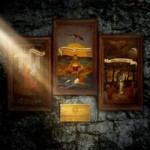
Opeth – Pale Communion (Roadrunner Records)
There are countless comparisons one could draw upon in considering Heritage, Pale Communion, and the world on either side. None would adequately do the experience justice, however, as Pale Communion remains my favorite indulgence in the band’s prog-rock decade. It’s spry, it’s wide open, it features all of the elements that make Opeth Opeth but without the growls or distortion. My only lament is that I have not seen the band live since 2013 and while I have no doubt these songs slay in that setting (Garden Of The Titans offered only one track), there is nothing quite like being there and now two albums beyond Pale Communion’s release, the possibility of a dense setlist with that material is unlikely. You win some, you lose some.

Eigenlicht – Self-Annihilating Consciousness (Gilead Media)
There are times when you are so taken with a release that it casts a shadow over everything that comes after. For Self-Annihilating Consciousness that carried many different facets – the raw impact of the album itself and the subsequent journey into the depths of the black metal scene across the Pacific Northwest embodied in the past through its members. A journey that, here at the close of 2019, is still ongoing. This album, though born of the Cascadian scene, does not share a great deal with it sonically – the songs are long and feature ample synth – but there is little here with previous mentions from this world beyond its members. What remains is something that, while not quite monolithic, is a singular experience. Visceral, exhausting, all similar descriptors apply. This album would wrestle even with The Revenant for top spot if it were something to be debated.


